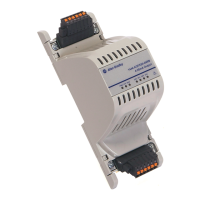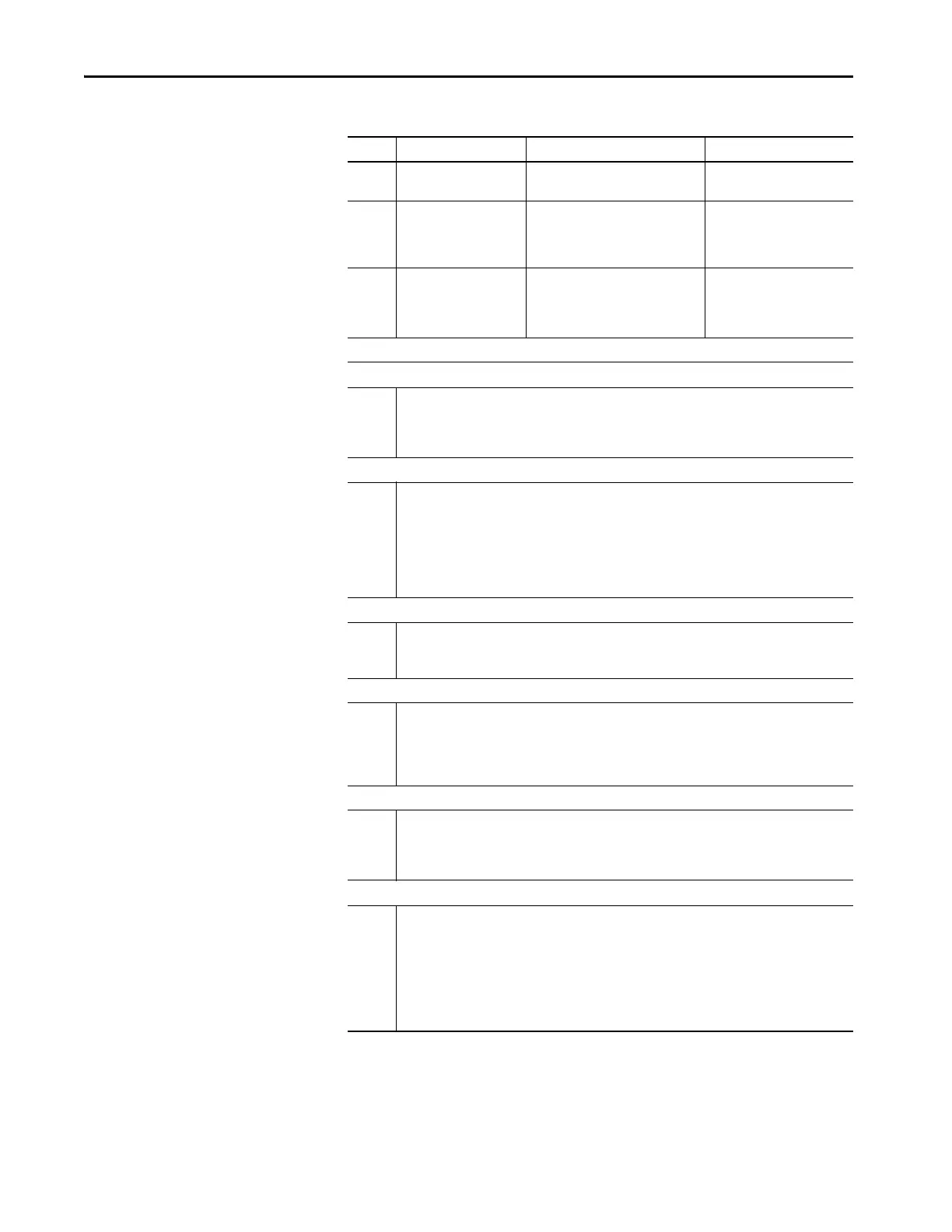Rockwell Automation Publication 1444-UM001D-EN-P - June 2018 411
CIP Objects Appendix A
34 Network ACD Event An Address Conflict has been detected
(may or may not lead to a fault state)
No data bytes are used
35 Network ACD Fault A detected address conflict has led to
an addressing / network fault (the
assigned address could not be
'defended').
No data bytes are used
36 Available memory This event is triggered every transition
to run-mode (after memory allocations
have been made).
Bytes 10/11 indicate the free
memory available (MB)
Example: 180-1 = 0x1B4 = 436
MB remaining
Notes
Expansion Module Detection
15 • In the event log entry, byte 8 is the previous state and 10 the current
• The same bit allocations are used as in Module Control Object, Class Attributes 2 & 16,for example. bit
4 is the TSCX module
• Here, a bit set indicates that this module is expected but missing
Expansion Module Status
16 • In the event log entry, bytes 8 & 12 both indicate the particular module reporting the change.
• The same bit allocations are used as in Module Control Object, Class Attributes 2 & 16, e.g. bit 4 is the
TSCX module.
• Bytes 9 & 13 of the event log entry are unused.
• Bytes 10/11 represent the previous status, bytes 14/15 the new auxiliary module status.
• Source data for the auxiliary module status is the relevant 2-byte status for that module (Assembly
Object Status DWORDs 5 to 7).
Internal Power Supply Status
17 • Source data is the NetX Status DWORD (Assembly Object Status DWORD 0), upper 2 bytes.
• Bytes 8/9 are previous NetX status bits 16-31, bytes 10/11 are the new status data.
• The expected (OK state) returned values for these two bytes are 255 - 195.
AUX Processor Status (Other) Includes
18 • Source data is the NetX Status DWORD (Assembly Object Status DWORD 0), lowest byte.
• In the event log entry, byte 8 is the previous NetX status lowest byte, byte 9 is the new status data.
Examples of network issues:
bit 1 (value 2) set in the case of a network fault (example: disconnected cable)
bit 2 (value 4) set in the case of a network address conflict being detected
Controller Output Assembly Change
19 • Source data is the controller bit-level control data (Assembly Object Output Member List), bits 0 to 15.
• In the event log entry, bytes 8/9 are the previous controller data, bytes 10/11 are the new controller
data.
• Used to detect controller initiated changes associated with gating, control, reset & trigger functions.
Object Service
20 In the event log entry, byte 10 is an index indicating the action
1. Alarm Buffer Trigger (Data Manager Object)
2. Alarm Buffer Reset (Data Manager Object)
3. Reset Transient Data Buffer
4. Zero DC measurement
5. Zero Dual Channel measurement
In the case of 3, 4 & 5 where there are multiple measurements or buffers, byte 11 indicates the instance
number.
Table 140 - System Event Types (continued)
ID Name Description Bytes 8…15 Application

